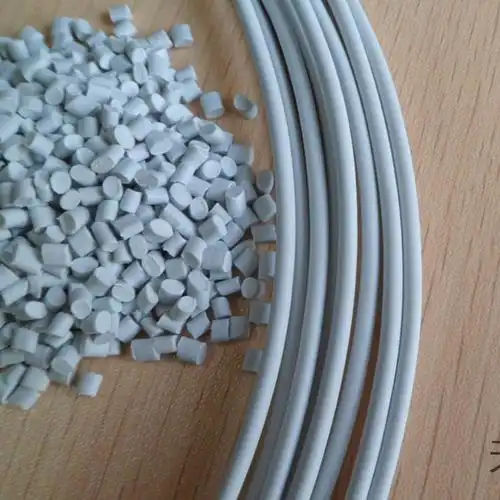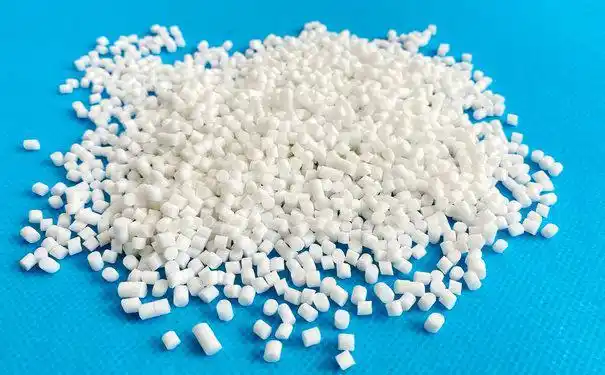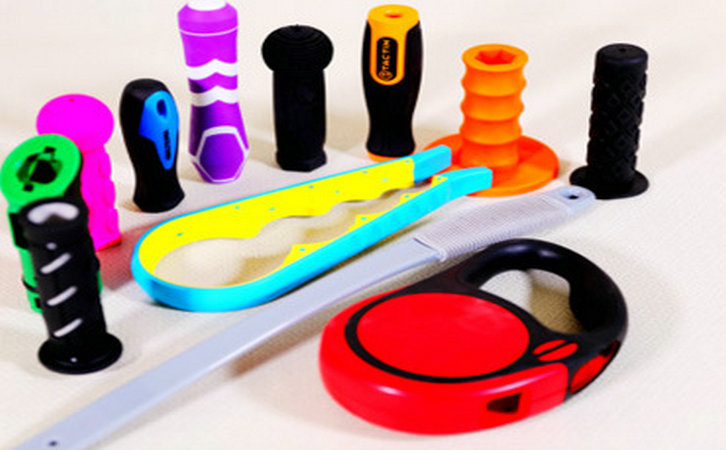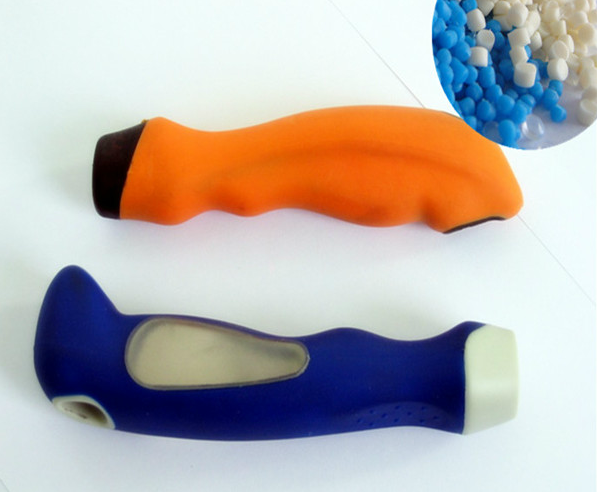Having worked in the materials industry for over a dozen years, I’ve had the chance to experiment with countless combinations of polymers, from automotive gaskets to consumer electronics. One question that pops up frequently, especially among product designers and manufacturers, is whether combining TPE (Thermoplastic Elastomer) and silicone in a product leads to shrinkage. It’s a practical concern—nobody wants a component that warps or loses its shape, especially in applications where precision matters. Drawing from my hands-on experience with both materials, I’ll dive into the science behind TPE and silicone, explore how they behave together, and clarify whether shrinkage is something you need to worry about. My goal is to equip you with the knowledge to make informed decisions for your projects.

Understanding TPE and Silicone: The Basics
Before we tackle the shrinkage question, let’s get to know our players. TPE is a versatile material that blends the stretchy feel of rubber with the moldability of plastic. It’s a favorite in industries like medical devices, footwear, and cables because it’s flexible, recyclable, and cost-effective. I’ve used TPE in everything from soft-touch grips to durable seals, and its ability to be injection-molded makes it a go-to for complex designs.
Silicone, on the other hand, is a thermoset elastomer known for its exceptional heat resistance, chemical stability, and softness. It’s commonly found in kitchenware, medical tubing, and baby products due to its inert nature and wide temperature range. In my career, I’ve seen silicone used in high-performance applications where durability under extreme conditions is critical.
Both materials are soft and flexible, which is why they’re often used together in multi-material products—like a TPE grip bonded to a silicone base or a hybrid medical device. But combining them raises questions about compatibility, especially regarding dimensional stability (i.e., shrinkage). Let’s explore why this matters and whether it’s a real issue.
What Is Shrinkage, and Why Does It Happen?
Shrinkage in materials refers to a reduction in size after processing, typically due to cooling, curing, or environmental exposure. In my time working with polymers, I’ve seen shrinkage cause headaches in manufacturing—think of a molded part that comes out smaller than the mold or a component that warps over time. For TPE and silicone, shrinkage is influenced by their unique properties and how they’re processed.
TPE Shrinkage: TPE is a thermoplastic, meaning it’s heated and molded, then cools to solidify. During cooling, the polymer chains contract, leading to shrinkage rates typically between 0.5% and 2%, depending on the TPE type (e.g., SBS, SEBS) and processing conditions. I’ve noticed higher shrinkage in oil-extended TPEs due to their softer formulations.
Silicone Shrinkage: Silicone, a thermoset, is cured (often with heat or catalysts) rather than cooled. Its shrinkage is generally lower, around 0.2% to 1%, because its cross-linked structure is more stable. I’ve worked with liquid silicone rubber (LSR) that had near-zero shrinkage in precision applications.
When TPE and silicone are used together—say, in overmolding or co-extrusion—the question is whether their interaction amplifies shrinkage or causes unexpected dimensional changes.

Do TPE and Silicone Shrink When Combined?
The short answer, based on my experience, is: not significantly, if processed correctly. However, there are nuances to consider. Combining TPE and silicone in a single product (e.g., a TPE layer bonded to a silicone substrate) involves complex interactions during manufacturing and use. Let’s break down the key factors that affect shrinkage when these materials are used together.
1. Processing Compatibility
TPE and silicone have different processing requirements, which can influence shrinkage:
TPE Processing: TPE is typically injection-molded or extruded at temperatures between 150°C and 220°C. If the mold isn’t properly cooled or the TPE is over-heated, it can shrink unevenly. I’ve seen this in poorly designed molds where TPE parts shrank by 2% more than expected.
Silicone Processing: Silicone is cured at higher temperatures (often 120°C to 200°C for LSR) or with catalysts for room-temperature vulcanizing (RTV) silicone. Its curing process is less prone to shrinkage, but improper curing can lead to slight dimensional changes.
When combining them, such as in overmolding (where TPE is molded over a cured silicone part), the key is ensuring compatible processing conditions. I’ve worked on projects where mismatched temperatures caused the TPE to shrink slightly more than the silicone, creating stress at the bond interface. However, with proper mold design and cooling, this is manageable.
2. Bonding and Interface Effects
TPE and silicone don’t naturally bond well due to their chemical differences. To combine them, manufacturers often use adhesives, primers, or mechanical interlocking (e.g., undercuts in the mold). In my experience, improper bonding can lead to issues that mimic shrinkage:
Stress-Induced Warping: If the TPE shrinks more than the silicone during cooling, it can pull on the silicone, causing slight deformation. I saw this in a medical device where a TPE grip shrank 1.5% while the silicone base stayed stable, leading to a warped interface.
Adhesive Failure: A weak bond can cause the materials to separate, which might be mistaken for shrinkage. I’ve advised clients to use silicone-compatible primers to ensure a strong bond.
With proper bonding techniques, such as plasma treatment or specialized adhesives, I’ve seen TPE and silicone coexist without significant dimensional issues.

3. Environmental Exposure
Once the product is made, environmental factors like temperature, humidity, and UV exposure can affect shrinkage:
TPE: TPE is sensitive to high temperatures and UV light, which can cause minor shrinkage or degradation over time. I’ve tested TPE components left in hot environments (e.g., 80°C) and noticed up to 0.5% additional shrinkage after prolonged exposure.
Silicone: Silicone is more stable, resisting shrinkage even at extreme temperatures (up to 200°C). In my tests, silicone parts maintained their dimensions in harsh conditions where TPE showed slight changes.
When used together, the TPE’s shrinkage could stress the silicone, but this is rare in well-designed products. For example, I worked on a hybrid TPE-silicone phone case that held its shape perfectly after months of use, thanks to careful material selection and processing.
4. Material Formulation
Not all TPEs or silicones are the same. TPE can be SBS-based, SEBS-based, or oil-extended, each with different shrinkage rates. Silicone can be high-consistency rubber (HCR) or liquid silicone rubber (LSR), with LSR typically having lower shrinkage. In my career, I’ve found that SEBS-based TPE and LSR silicone are the best pairing for minimal shrinkage due to their stability.
Comparing TPE and Silicone Shrinkage
To clarify how TPE and silicone behave, here’s a table based on my industry experience and testing:
|
Material |
Typical Shrinkage Rate |
Processing Factors |
Environmental Stability |
|---|---|---|---|
|
TPE |
0.5%–2% |
Injection molding, cooling rate |
Moderate (sensitive to heat, UV) |
|
Silicone |
0.2%–1% |
Curing temperature, catalyst |
High (resists heat, UV, chemicals) |
|
TPE + Silicone |
0.5%–1.5% (combined part) |
Bonding method, mold design |
Moderate (TPE limits stability) |
|
PVC (for comparison) |
0.5%–3% |
Molding conditions |
Low (prone to heat degradation) |
This table shows that silicone has lower shrinkage than TPE, but when combined properly, the overall shrinkage of a hybrid part is manageable and typically aligns with TPE’s range.
Real-World Example
Let me share a story from a project I worked on a few years ago. A client was designing a medical wearable with a TPE outer layer overmolded onto a silicone core. Initially, they noticed slight warping in prototypes, which they feared was shrinkage. After reviewing their process, we found the issue wasn’t shrinkage but uneven cooling of the TPE, which shrank 1.8% while the silicone stayed stable at 0.3%. By adjusting the mold temperature and using a silicone-compatible primer, we reduced the combined shrinkage to under 1% and eliminated warping. The final product was dimensionally stable and passed all regulatory tests. This experience underscored the importance of precise processing when combining TPE and silicone.

How to Prevent Shrinkage When Using TPE and Silicone Together
Based on my years of troubleshooting, here are practical tips to minimize shrinkage in TPE-silicone products:
Optimize Processing Conditions: Ensure proper mold temperatures (e.g., 20–40°C for TPE cooling, 120–150°C for silicone curing) and consistent cooling rates. I’ve seen uniform cooling reduce shrinkage by up to 0.5%.
Choose Compatible Grades: Use SEBS-based TPE and LSR silicone for lower shrinkage and better bonding. I’ve found these grades perform best in hybrid applications.
Use Proper Bonding Techniques: Apply silicone-compatible adhesives or plasma treatment to ensure a strong bond, preventing stress-induced shrinkage. I’ve used plasma treatment successfully in automotive projects.
Test Prototypes: Always produce and test prototypes under real-world conditions. I’ve caught shrinkage issues early by stress-testing TPE-silicone parts in heat and humidity.
Protect from Harsh Environments: Store and use TPE-silicone products away from prolonged heat or UV exposure to prevent TPE shrinkage. I recommend UV-resistant additives for outdoor applications.
When Might Shrinkage Occur?
While TPE and silicone don’t typically shrink significantly when combined, certain scenarios can lead to issues:
Poor Processing: Overheating TPE or under-curing silicone can increase shrinkage. I’ve seen this in rushed production runs where molds weren’t properly calibrated.
Mismatched Shrinkage Rates: If the TPE shrinks more than the silicone, it can cause stress or warping at the bond. This happened in a project where a high-shrinkage TPE (2%) was paired with low-shrinkage LSR (0.2%).
Environmental Stress: Prolonged exposure to high temperatures (above 80°C) or UV light can cause TPE to shrink slightly, affecting the overall part. I’ve advised clients to use UV stabilizers for outdoor TPE-silicone products.

Addressing Common Misconceptions
I’ve encountered a few myths about TPE and silicone. One is that they always shrink significantly when combined. In reality, proper processing keeps shrinkage minimal. Another misconception is that TPE and silicone can’t be bonded effectively. With modern adhesives and techniques like plasma treatment, I’ve seen them work seamlessly in countless applications.
Why Use TPE and Silicone Together?
Despite potential challenges, combining TPE and silicone offers unique benefits. TPE provides cost-effective flexibility, while silicone adds heat resistance and biocompatibility. I’ve seen this combo shine in medical devices (e.g., flexible silicone tubing with a TPE grip) and consumer goods (e.g., a silicone kitchen tool with a TPE handle). When processed correctly, the result is a durable, high-performance product with minimal shrinkage.
My Take: A Manageable Challenge
After years of working with TPE and silicone, I can confidently say that shrinkage is not a major issue when they’re used together, provided you follow best practices. By selecting compatible grades, optimizing processing, and testing thoroughly, you can achieve dimensionally stable products. The key is understanding each material’s behavior and tailoring your approach to your specific application. Whether you’re designing a medical device or a consumer product, TPE and silicone can work harmoniously without significant shrinkage.

Conclusion: Building Confidence in TPE-Silicone Combinations
So, will TPE and silicone shrink when used together? In most cases, no, or at least not enough to cause problems, as long as you use proper processing techniques and compatible materials. With shrinkage rates typically below 1.5% for well-designed hybrid parts, TPE and silicone can be combined to create durable, high-quality products. By following the tips I’ve shared—optimizing processing, choosing the right grades, and testing rigorously—you can avoid shrinkage issues and leverage the strengths of both materials. Whether you’re a manufacturer or a designer, this knowledge empowers you to create reliable, long-lasting products.
Related Questions and Answers
Q: Can TPE and silicone be bonded without adhesives?
A: Yes, using mechanical interlocking (e.g., undercuts) or surface treatments like plasma activation. I’ve seen plasma treatment create strong bonds in TPE-silicone medical devices.
Q: Is TPE or silicone more prone to shrinkage?
A: TPE typically shrinks more (0.5%–2%) than silicone (0.2%–1%) due to its thermoplastic nature. I recommend SEBS-based TPE for lower shrinkage in hybrid applications.
Q: How do I know if my TPE-silicone part has shrunk?
A: Measure the part against its mold dimensions. Warping or stress at the bond interface may also indicate shrinkage. I’ve used calipers to catch 1% shrinkage in prototypes.
Q: Are TPE-silicone products safe for medical use?
A: Yes, if both materials are medical-grade and certified (e.g., FDA, ISO 10993). I’ve worked on TPE-silicone devices that passed strict biocompatibility tests.
Q: Can environmental exposure cause TPE-silicone parts to shrink over time?
A: TPE may shrink slightly (0.5%) under prolonged heat or UV exposure, but silicone is stable. I recommend UV-resistant TPE additives for outdoor use.





